** **
The Followers
About Us
CHARMS & COLORS (JM0743191-D) merupakan pengedar sah untuk produk Tanamera, Shaklee, Amway, Nona Roguy, Ephyra, Tropika & Nursajat. Kami juga menawarkan barangan ketika berpantang seperti set bersalin & tungku dengan kualiti terbaik dan harga yg amat berpatutan.
Promotion
Labels
Aaira Aleena
(5)
Aidilfitri
(1)
Amway
(10)
Andalucia
(2)
Anniversary Day
(4)
Baby
(45)
Baby Food
(3)
Baby Stuff
(30)
Bedroom Set
(4)
Berpantang
(21)
Birthday
(7)
Book Review
(1)
Breastfeeding
(14)
Bridesmaid
(1)
Bunting
(3)
Business
(4)
Charms & Colors
(45)
Cheezylicious Cakes
(5)
Ciki... love
(7)
Contest
(2)
Delivery
(1)
Emir Danish
(26)
Engagement
(7)
Ephyra
(3)
Eurotrip
(7)
Extavia Engineering
(1)
Family
(10)
Fisher-Price
(2)
Food
(4)
For Sale
(1)
Gadget
(2)
Granada
(1)
Guestbook
(12)
Hantaran
(13)
Health
(1)
Holiday
(1)
Home
(30)
House
(1)
Irfan Saif
(1)
Kids
(1)
Kids Stuff
(1)
Love Story
(1)
Maajun Anggun Bistari
(1)
MAB
(1)
Madness
(2)
Majlis Aqiqah
(2)
Majlis Nikah
(1)
Makanan Sedap
(1)
Makeup Remover
(1)
Makeups
(3)
Marriage
(1)
Memories
(2)
Merisik
(1)
MLO
(1)
Morocco
(1)
Motherhood
(2)
Nona Roguy
(8)
Nursery Rhymes
(1)
Panduan
(1)
Parenting
(2)
Pelamin
(1)
Perfume
(4)
Personal
(95)
Photographer
(3)
Pregnancy
(37)
Promosi
(1)
Promosi 2015
(1)
Random
(15)
Raya
(1)
Resepi
(9)
Romania
(2)
Set Bersalin
(11)
Set Pengurusan Uri
(1)
Shaklee
(4)
Shopping
(1)
Sickness
(1)
Skincare
(1)
Souvenir
(13)
Spain
(3)
Tanamera
(12)
Theme Color
(3)
Tips
(4)
Toys
(1)
TQ Tag
(9)
Travel
(4)
Travelogue
(13)
Tudung
(2)
Videographer
(2)
Wedding
(50)
Wedding - Bridal
(4)
Wedding - Cake
(3)
Wedding - Card
(7)
Wedding - Date
(6)
Wedding - Dress
(9)
Wedding - Nikah
(5)
Wedding - Package
(3)
Wedding - Song
(1)
Wedding Checklist
(3)
WifeyHubby
(28)
Wishlist
(12)
Work
(5)
Workplace
(1)
Zalora
(1)
momma yang cantekkk!
Aku nak benda ni sangat2!
Sejak Emir belum lahir lagi pun aku memang dah jatuh cinta yang teramat ngan brand tu.
macam, oh my.
Super comel la barang mOmma nehhh.
Tapi agak mahal juger.
Botol dia kan gemuk2 macam Tommee Tippiee.
and veri colorful gitu.
but for the bottle I still opt for TT la sbb lebih well known akan kebagusan dia kan.
mOmma punya bottle tu mcm gemuk sgt la pulak nak letak dlm henbeg.
and bentuk dia bukan mcm breast pun so tak mungkin la Emir suka, kan.
Normal price for this mOmma: Developmental Meal Set is RM105 and the cheapest yg aku jumpa is RM89.25.
ok tak eh?
The mOmma: Developmental Meal Set works with your baby to increase motor skills and enjoy feeding time. Stage one utilizes the plate and spoon. The plate is non-slip and non-tip base. Two compartments separate foods, promote taste differentiation and develop dipping skills. The spoon with soft tip is easy on the baby's gums. The rocking base entertains while keeping the utensil upright and preventing contact with soiled surfaces. Stage two utilizes the same plate with the fork with its rigid, yet soft prongs that promote normal use of utensils by baby.
and ada jugak this mOmma: Developmental Drink Set tapi ntah ye.
macam tak berapa berminat.
maybe sebab anak aku belum start minum gitu lagi kot.
The mOmma: Developmental Drink Set are designed to follow the various stages of your baby's growth and learning step by step, supplying a useful and complete product for weaning.
Three stage levels :
Stage 1 - 4m+, feeding bottle, round and ergonomic for your baby's tiny hands
Stage 2 - 6m+, non-spill and dual handle system can be fitted to the cup. Baby learns to grip the dual handles
Stage 3 - 8m+, cup with straw and single handle system can be fitted to the cup. Baby starts drinking from the straw using the single handle.
haiyohhh!
gile soping barang Emir je aku ni weh.
since Emir is entering his eating stage soon, harus la ai carik sebab utk soping brg dia je kan. bole jatuh mesken omak kalo ko dok enter byk2 stage ni nak.
and ptg ni Hubby ajak soping cat utk luar rumah.
sebab nak tambah awning kat depan tu so nak cat sekali la kan.
and aku nak tambah kaler dark fuschia utk feature wall kat hall atas tu.
kaler tu sebab aku dah terbeli gambar bunga cantek kaler pink so harus la dinding tu ikut tema gambar yang nak disangkut, kan.
Lama tak bercerita pasal rumah.
Akhirnya sampai nak duduk dekat setahun dah ni pun cerita tak abih lagi.
oh ye. aku tau mesti Harz nak cakap, yang pasal kawin, pasal bersalin tu pun akhirnya tak abih cerita jugak.
eh.
Categories
Baby,
Baby Stuff
Fisher Price for little Emir
Yesterday, I bought this for little Emir.
Fisher Price Kick & Play Piano.
Normal price is RM149.90 and I bought it at 50% discount!
been eyeing this thing for quite sometimes tapi nak tunggu sale la baru beli kan.
hoho sangat berbaloi la aku sabar tunggu sale ye sbb sangat murah hokey!
And I've also been eyeing this thing juger.
Fisher Price Healthy Care™ Booster Seat.
Normal price is RM199.90 and my sis bought it for RM150 for little Syaura.
Tapi kedai yang dia beli murah tu kat Miri la.
Nak menunggu dia balik sini time raye kang anak aku dah berlari gaknye.
The cheapest yang aku jumpa kat sini is RM145 + delivery charges.
ada sesapa jumpa lagi murah tak sebab anak aku nak start mkn bln 8 ni so harus la ai bersoping before saat itu kan.
The Fisher-Price® Healthy Care™ Booster Seat has a feeding tray you can sanitize right in the dishwasher. With the snap-on lid in place, your child’s tray will stay clean until you’re ready to use it! So you can take it wherever you go (it folds compactly) and always be sure that baby’s feeding tray is dishwasher clean! Three height adjustments allow for a custom fit to any table. Front & rear seat straps adjust to fit virtually any chair and three-point harness adjusts to hold growing child securely. For added clean-up ease, the Healthy Care™ seat is free of crevices, so it won’t trap crumbs. The booster folds compactly for portability, with a carry strap so you can take it anywhere!
- Feeding tray with snap-on lid keeps feeding surface clean wherever you go
- Booster folds for easy portability
- With the plastic snap-on lid in place, the tray stays clean until you’re ready to use it
- Easy-clean seat with no crevices to trap crumbs
- Back & tray remove for older child
- Three height adjustments
- Three-point harness adjusts to hold growing child securely
- Front & rear seat straps adjust to fit virtually any chair
- Adjustable shoulder straps make it easy to carry
veri convenient la kan.
bole jadi high chair.
bole angkut pegi piknik.
bole guna sampai besar pun.
ai suker!
Aku takmo yang bumbo tu sebab baby kan cepat besar so walaupun benda tu super comel tapi adalah sgt tak praktikal utk beli something yg bole diguna 2, 3 bln sajer.
And baby walker is a big no-no.
walaupun memudahkan kita tapi sangat banyak la disadvantages nya.
cousin Hubby sendiri mengalami masalah disebabkan walker ni.
and secara automatik Hubby telah ban cik walker drp ada kat rumah kami.
and do u know that baby walker is being banned by Canada?
yep.
Some of the sites that against baby walker :
http://www.livestrong.com/article/59830-baby-walkers/
http://www.pediatricservices.com/parents/pc-21.htm
http://papabiz.net/healthy/baby-walker-banned-in-canada/
http://www.webmd.com/parenting/baby/news/20060307/baby-walker-injuries-drop
----------------------------
Advance for PHYSICAL THERAPISTS
Limiting Time in ‘Walker’ Devices May Avoid Back Pain Later in Life
By Pamela Rohland
Over the past decade, millions of parents have found baby walkers and similar products an ideal way to keep their kids busy and out of trouble while they take a break or attend to chores. But most parents aren’t aware of the dangers that accompany these seemingly innocuous pieces of equipment, including the potential for accidents and the potential for children to develop postures that have been associated with adult pack pain.
"I don’t think the advantages of walkers and saucers override the disadvantages," said Debi Kardon, PT, a staff therapist at the Voorhees, NJ. Evidence pointing to safety concerns with infant walkers is mounting. The American Medical Association called walkers a "lethal form of transportation" and a new study supports that description.
Researchers at The Ohio State University College of Medicine at Children’s Hospital in Columbus reviewed the records of 217 children treated at the hospital for baby walker-related injuries. In a report on the study from Reuters (Aug.5), despite adult supervision in 78 percent of the cases, 58 percent of the children had contusions and abrasions, 13 percent had concussions and head injuries, 12 percent had lacerations and 9.5 percent had skull fractures. Almost all of the children were injured after falling down stairs while in the walker.
Prevention strategies such as adult supervision, warning labels and stairway gates are not enough to make the walkers safe. Critics of the equipment are calling for stronger action. They suggest a ban on baby walkers in the United States, a strategy Canadians have adopted, or at least the manufacture of baby walkers that are too wide to fit through standard doorways.
From a safety standpoint, stationary activity centers like the saucers, which don’t roll across the floor on wheels, are preferable to baby walkers. But those who spoke with ADVANCE said both walkers and saucers can cause physical impairment and stress that they would not recommend either device.
So far, the evidence pointing to physical problems is largely anecdotal partly because it is difficult to measure the movements of such tiny bodies when they are in a cumbersome piece of equipment. And manufacturers counter that saucers can help kids develop some coordination as they turn, bounce and rock. But even they caution against placing children in the devices for more than 20 minutes a day.
Mary Weck, PT, a clinical specialist at Children’s Memorial Hospital in Chicago, said she has seen more babies walking later because when they hang suspended in a walker or a saucer, they aren’t exercising the muscles they need for walking. "We’ve seen children who are over 18 months old who aren’t walking," Weck said. "Usually children walk when they are between 11 and 15 months. The only known condition these babies have in common is spending an inordinate amount of time in a walker or saucer.
"They don’t have the power to stay upright on their own because they don’t have good back extensors or abdominal muscles." The can have a negative influence on balance. Weck said she is even more concerned by children who are developing a posture that is almost sway-back because of the overuse of walkers or saucers.
They arch their back in an unusual way," she said. "That posture can cause back pain in adults, and there may be potential for long-term disability." When she treats teenagers with back pain, Weck asks whether they used a walker as a baby. Almost invariably, the answer is "yes". The devices also could contribute to difficulty with the feet because children often wind up waling on their toes or pronating their feet.
Kardon, who works with children with neurological physical impairments, said she definitely would not recommend walkers or saucers for them. "Developmentally delayed children or children with special needs use abnormal movement patterns," she said. "With spasticity, they’re already pushing their bodies into extension as a compensatory measure, and saucers would promote the abnormal patterns that we’re trying to break."
Peter A. Gorski, MD, MPA, executive director of the Massachusetts Caring for Children Foundation in Boston, said that along with physical and safety issues, he is concerned that walkers and saucers give parents and babies less time to interact. "The walkers diminish both crucial social interactive time and create unsafe situations," he said.
The clinicians interviewed agreed that babies need supervised "tummy time" to develop back, neck, abdominal and buttock muscles. They recommend a return to simply time spent playing with Mom an Dad on the floor, instead of using walkers and saucers. When parents need a break and would otherwise use standing equipment, playpens work great, said Weck.
If walkers and saucers must be used, babies should be in them no more than 20 minutes a day and parents should be with the child during that time, Gorski said. "If walkers can be used within a social context and they are only one tool to accomplish something, then they’re fine." he said. "But I would want them to be used interactively."
Weck said there needs to be more study to determine the effects of walkers and saucers. In the meantime therapist must help educate parents. "Most people have not heard the information about potential postural abnormalities," she said. "New parents are the most receptive to this information. People are not receptive if they already use them."
*About the author: Pamela Rohland is a free-lance writer and the owner of Rohland Communications in Bernville, PA. She is a regular contributor to ADVANCE.
--------------------------------------------------------------------------------
Baby walkers: Considering the full price of convenience
By Michelle P. Pronsati, ADVANCE staff
They are a standard gift at almost every baby shower, and for years parents have welcomed them as a respite from hands-on child care. Babies seem to enjoy them as well, rolling gleefully from room to room as they savor their first taste of mobility and independence.
But there is a simmering debate as to whether baby walkers are a good idea at all. Pediatricians, physical therapists and other health professional who work closely with infants say inappropriate uses and mounting injuries make the baby walker at item worth greater scrutiny.
"Walkers are generally bad for babies because manufacturers haven’t found a way to make them safe," said Donna Picone, MEd. PT, supervisor of the early intervention program at John F. Kennedy Medical Center in Edison, NJ.
It’s not that the manufacturers haven’t tried. Most major walker makers have attempted to answer parental and consumer concerns by reducing the size of leg openings and adding inches to the height of the back rest. But child experts estimate that thousands of infants are placed in walkers before they have developed sufficient head or trunk control, rendering these model changes almost useless.
Many of today’s models are adjustable in height, designed to adapt to the child as he or she grows. This change alone has prompted more parents to use walkers too early.
"They’re so much lower to the ground now that you can put younger babies in them," Ms. Picone said. "It used to be that walkers weren’t used until a baby was six months or older, but I’ve seen mothers use them at much young ages."
With today’s higher backs and lower heights, it’s easy to be lulled into thinking that walkers provide appropriate support, the PT acknowledged. But although here may be greater back support, there is virtually nothing to promote trunk or head control.
The belief that walkers accelerate a baby’s ambulatory progress is also a misconception, Ms. Picone pointed out. Although parents may believe a walker will promote exercise and purposeful movement, it actually can encourage inappropriate balance and postural techniques.
Walking on the toes is common while a baby is in a walker. This natural response involves stiffened legs and an of counterbalance. According to physical therapists and other clinicians who have studied motor behavior in infants, this reinforces undesirable movement patterns and can lead to problems in the manipulation of handheld toys.
Walkers may be particularly inappropriate for children with motor delays or other developmental problems, according to published research (see suggested reading list at end of story). Among infants with muscle tone or coordination problems, walker activities may hinder progress in physical therapy and other treatment.
Moreover, studies have shown that walkers do not actually hasten walking. Although babies can move the walker at an early age by pushing with their feet, this is only because their body is supported and not because they have the motor control and balance necessary for walking. This movement is merely propulsion, not walking.
"Walkers can provide parents with a few uninterrupted minutes to get something done, and they also give babies a sense of mobility and freedom," Ms. Picone said. "But parents should always be concerned with how long their child is in a walker. It should only be for short periods of time.
Walkers also can contribute to motor control and comfort in certain babies with special needs.
"When a baby is in a seated position without support, primitive reflexes are decreased," Ms. Picone explained. "And in some babies, a walker helps them come to a middle upright position."
She cited the case of a 15-month-old center. All four of her extremities are involved and she has a difficult time separating from her mother. Discouraged by the child’s continued volatile responses when she placed the girl on the floor, the mother tried a walker.
"She tolerates it better than being placed on the floor and it’s appropriate for her," the PT said. "While she’s in the walker, her feet are flat and her knees are bent. Her head control has improved as a result."
The use of walkers for babies with special needs should be a carefully considered decision. Ms. Picone cautioned.
"I advise parents and therapists to make the decision on an individual basis. If the child is motivated to move, it may be a help.: she said. "Some aren’t motivated that way."
As a matter of routine, therapists in the early intervention program at JFK Medical Center ask parents whether they use a walker at home. If they do, they are asked to bring the walker in for an evaluation.
"We evaluate each child in their walker to determine whether they can actually utilize it well," she explained. "If we can better position the child that will usually help. We won’t modify a whole lot, though, because if the child got hurt in the walker, liability would be an issue...but often, just adjusting one notch can do the trick."
Some of the issues that should be considered when evaluating a walker include height, the depth of the tray in front of the child, and the space between the child’s torso and the inner circumference of the walker.
"A child shouldn’t be able to slip his arm down and become stuck," Ms. Picone noted. "There should be a space of between 3 or 4 inches from the walker try to the baby’s ribs."
No matter how a walker is being used, constant supervision is imperative. More than 25,000 babies involving walkers, according to federal statistics. In the majority of accidents, babies fall down stairs in the walkers or topple over when the wheels become jammed. Many other accidents occur when floor surfaces change.
Babies placed in walkers when they are too young and small have become trapped in leg openings, while babies who are too large have fallen while trying to climb out of the device.
These injuries, which typically include head fractures and lacerations and tooth damage, have become so prominent that a Seattle pediatrician recently called for the removal of baby walkers from the market. Abe Bergman, MD., director of pediatrics at Harborview Medical Center, said last month that he and some pediatrician colleagues intend to ask the Consumer Product Safety Commission to issue a ban on walkers.
Parents who use walkers should watch for warning signs that their infant has outgrown their appropriate use, Mrs. Picone said.. These signs include an ability to stand upright on flat feet and a tendency to reach for objects.
"The best position for using a walker is with the child’s knees bent at 90 degrees and the feet flat at 90 degree," she said. "If they’re pulling to standing, they shouldn’t be in a walker. The walker try should reach only to chest level, and it’s not if the child is standing. When it’s at waist level the child can flip the walker over by reaching or pushing forward quickly."
The use of walkers is something that should be monitored carefully and of only short duration, the PT said.
"There are many possibilities for babies to explore the world, including the floor," she concluded. "They shouldn’t be placed in walkers for more than 15 minutes, and always under constant supervision. Babies do things for the first time - like standing or reaching - when you least expect it. That’s why parents should always be prepared."
Suggested Reading :
Wellman, S. Paulson, J. "Baby Walker Related Injuries." Clinical Pediatrics 23.98-99;1984
Kauffman, J., Ridenour, N. "Influence of an Infant walker on Onset and Quality of Walking Patterns of Locomotion: An Electromyographic Investigation". Perceptual and Motor Skills 45:1323-1329;1977
Kavanaugh, C., Branco, L. "The Infant Walker: A Previously Unrecognized Health Hazard". American Journal of Disabled Children 136:205
Fisher Price Kick & Play Piano.
Normal price is RM149.90 and I bought it at 50% discount!
been eyeing this thing for quite sometimes tapi nak tunggu sale la baru beli kan.
hoho sangat berbaloi la aku sabar tunggu sale ye sbb sangat murah hokey!
And I've also been eyeing this thing juger.
Fisher Price Healthy Care™ Booster Seat.
Normal price is RM199.90 and my sis bought it for RM150 for little Syaura.
Tapi kedai yang dia beli murah tu kat Miri la.
Nak menunggu dia balik sini time raye kang anak aku dah berlari gaknye.
The cheapest yang aku jumpa kat sini is RM145 + delivery charges.
ada sesapa jumpa lagi murah tak sebab anak aku nak start mkn bln 8 ni so harus la ai bersoping before saat itu kan.
The Fisher-Price® Healthy Care™ Booster Seat has a feeding tray you can sanitize right in the dishwasher. With the snap-on lid in place, your child’s tray will stay clean until you’re ready to use it! So you can take it wherever you go (it folds compactly) and always be sure that baby’s feeding tray is dishwasher clean! Three height adjustments allow for a custom fit to any table. Front & rear seat straps adjust to fit virtually any chair and three-point harness adjusts to hold growing child securely. For added clean-up ease, the Healthy Care™ seat is free of crevices, so it won’t trap crumbs. The booster folds compactly for portability, with a carry strap so you can take it anywhere!
- Feeding tray with snap-on lid keeps feeding surface clean wherever you go
- Booster folds for easy portability
- With the plastic snap-on lid in place, the tray stays clean until you’re ready to use it
- Easy-clean seat with no crevices to trap crumbs
- Back & tray remove for older child
- Three height adjustments
- Three-point harness adjusts to hold growing child securely
- Front & rear seat straps adjust to fit virtually any chair
- Adjustable shoulder straps make it easy to carry
veri convenient la kan.
bole jadi high chair.
bole angkut pegi piknik.
bole guna sampai besar pun.
ai suker!
Aku takmo yang bumbo tu sebab baby kan cepat besar so walaupun benda tu super comel tapi adalah sgt tak praktikal utk beli something yg bole diguna 2, 3 bln sajer.
And baby walker is a big no-no.
walaupun memudahkan kita tapi sangat banyak la disadvantages nya.
cousin Hubby sendiri mengalami masalah disebabkan walker ni.
and secara automatik Hubby telah ban cik walker drp ada kat rumah kami.
and do u know that baby walker is being banned by Canada?
yep.
Some of the sites that against baby walker :
http://www.livestrong.com/article/59830-baby-walkers/
http://www.pediatricservices.com/parents/pc-21.htm
http://papabiz.net/healthy/baby-walker-banned-in-canada/
http://www.webmd.com/parenting/baby/news/20060307/baby-walker-injuries-drop
----------------------------
Advance for PHYSICAL THERAPISTS
Limiting Time in ‘Walker’ Devices May Avoid Back Pain Later in Life
By Pamela Rohland
Over the past decade, millions of parents have found baby walkers and similar products an ideal way to keep their kids busy and out of trouble while they take a break or attend to chores. But most parents aren’t aware of the dangers that accompany these seemingly innocuous pieces of equipment, including the potential for accidents and the potential for children to develop postures that have been associated with adult pack pain.
"I don’t think the advantages of walkers and saucers override the disadvantages," said Debi Kardon, PT, a staff therapist at the Voorhees, NJ. Evidence pointing to safety concerns with infant walkers is mounting. The American Medical Association called walkers a "lethal form of transportation" and a new study supports that description.
Researchers at The Ohio State University College of Medicine at Children’s Hospital in Columbus reviewed the records of 217 children treated at the hospital for baby walker-related injuries. In a report on the study from Reuters (Aug.5), despite adult supervision in 78 percent of the cases, 58 percent of the children had contusions and abrasions, 13 percent had concussions and head injuries, 12 percent had lacerations and 9.5 percent had skull fractures. Almost all of the children were injured after falling down stairs while in the walker.
Prevention strategies such as adult supervision, warning labels and stairway gates are not enough to make the walkers safe. Critics of the equipment are calling for stronger action. They suggest a ban on baby walkers in the United States, a strategy Canadians have adopted, or at least the manufacture of baby walkers that are too wide to fit through standard doorways.
From a safety standpoint, stationary activity centers like the saucers, which don’t roll across the floor on wheels, are preferable to baby walkers. But those who spoke with ADVANCE said both walkers and saucers can cause physical impairment and stress that they would not recommend either device.
So far, the evidence pointing to physical problems is largely anecdotal partly because it is difficult to measure the movements of such tiny bodies when they are in a cumbersome piece of equipment. And manufacturers counter that saucers can help kids develop some coordination as they turn, bounce and rock. But even they caution against placing children in the devices for more than 20 minutes a day.
Mary Weck, PT, a clinical specialist at Children’s Memorial Hospital in Chicago, said she has seen more babies walking later because when they hang suspended in a walker or a saucer, they aren’t exercising the muscles they need for walking. "We’ve seen children who are over 18 months old who aren’t walking," Weck said. "Usually children walk when they are between 11 and 15 months. The only known condition these babies have in common is spending an inordinate amount of time in a walker or saucer.
"They don’t have the power to stay upright on their own because they don’t have good back extensors or abdominal muscles." The can have a negative influence on balance. Weck said she is even more concerned by children who are developing a posture that is almost sway-back because of the overuse of walkers or saucers.
They arch their back in an unusual way," she said. "That posture can cause back pain in adults, and there may be potential for long-term disability." When she treats teenagers with back pain, Weck asks whether they used a walker as a baby. Almost invariably, the answer is "yes". The devices also could contribute to difficulty with the feet because children often wind up waling on their toes or pronating their feet.
Kardon, who works with children with neurological physical impairments, said she definitely would not recommend walkers or saucers for them. "Developmentally delayed children or children with special needs use abnormal movement patterns," she said. "With spasticity, they’re already pushing their bodies into extension as a compensatory measure, and saucers would promote the abnormal patterns that we’re trying to break."
Peter A. Gorski, MD, MPA, executive director of the Massachusetts Caring for Children Foundation in Boston, said that along with physical and safety issues, he is concerned that walkers and saucers give parents and babies less time to interact. "The walkers diminish both crucial social interactive time and create unsafe situations," he said.
The clinicians interviewed agreed that babies need supervised "tummy time" to develop back, neck, abdominal and buttock muscles. They recommend a return to simply time spent playing with Mom an Dad on the floor, instead of using walkers and saucers. When parents need a break and would otherwise use standing equipment, playpens work great, said Weck.
If walkers and saucers must be used, babies should be in them no more than 20 minutes a day and parents should be with the child during that time, Gorski said. "If walkers can be used within a social context and they are only one tool to accomplish something, then they’re fine." he said. "But I would want them to be used interactively."
Weck said there needs to be more study to determine the effects of walkers and saucers. In the meantime therapist must help educate parents. "Most people have not heard the information about potential postural abnormalities," she said. "New parents are the most receptive to this information. People are not receptive if they already use them."
*About the author: Pamela Rohland is a free-lance writer and the owner of Rohland Communications in Bernville, PA. She is a regular contributor to ADVANCE.
--------------------------------------------------------------------------------
Baby walkers: Considering the full price of convenience
By Michelle P. Pronsati, ADVANCE staff
They are a standard gift at almost every baby shower, and for years parents have welcomed them as a respite from hands-on child care. Babies seem to enjoy them as well, rolling gleefully from room to room as they savor their first taste of mobility and independence.
But there is a simmering debate as to whether baby walkers are a good idea at all. Pediatricians, physical therapists and other health professional who work closely with infants say inappropriate uses and mounting injuries make the baby walker at item worth greater scrutiny.
"Walkers are generally bad for babies because manufacturers haven’t found a way to make them safe," said Donna Picone, MEd. PT, supervisor of the early intervention program at John F. Kennedy Medical Center in Edison, NJ.
It’s not that the manufacturers haven’t tried. Most major walker makers have attempted to answer parental and consumer concerns by reducing the size of leg openings and adding inches to the height of the back rest. But child experts estimate that thousands of infants are placed in walkers before they have developed sufficient head or trunk control, rendering these model changes almost useless.
Many of today’s models are adjustable in height, designed to adapt to the child as he or she grows. This change alone has prompted more parents to use walkers too early.
"They’re so much lower to the ground now that you can put younger babies in them," Ms. Picone said. "It used to be that walkers weren’t used until a baby was six months or older, but I’ve seen mothers use them at much young ages."
With today’s higher backs and lower heights, it’s easy to be lulled into thinking that walkers provide appropriate support, the PT acknowledged. But although here may be greater back support, there is virtually nothing to promote trunk or head control.
The belief that walkers accelerate a baby’s ambulatory progress is also a misconception, Ms. Picone pointed out. Although parents may believe a walker will promote exercise and purposeful movement, it actually can encourage inappropriate balance and postural techniques.
Walking on the toes is common while a baby is in a walker. This natural response involves stiffened legs and an of counterbalance. According to physical therapists and other clinicians who have studied motor behavior in infants, this reinforces undesirable movement patterns and can lead to problems in the manipulation of handheld toys.
Walkers may be particularly inappropriate for children with motor delays or other developmental problems, according to published research (see suggested reading list at end of story). Among infants with muscle tone or coordination problems, walker activities may hinder progress in physical therapy and other treatment.
Moreover, studies have shown that walkers do not actually hasten walking. Although babies can move the walker at an early age by pushing with their feet, this is only because their body is supported and not because they have the motor control and balance necessary for walking. This movement is merely propulsion, not walking.
"Walkers can provide parents with a few uninterrupted minutes to get something done, and they also give babies a sense of mobility and freedom," Ms. Picone said. "But parents should always be concerned with how long their child is in a walker. It should only be for short periods of time.
Walkers also can contribute to motor control and comfort in certain babies with special needs.
"When a baby is in a seated position without support, primitive reflexes are decreased," Ms. Picone explained. "And in some babies, a walker helps them come to a middle upright position."
She cited the case of a 15-month-old center. All four of her extremities are involved and she has a difficult time separating from her mother. Discouraged by the child’s continued volatile responses when she placed the girl on the floor, the mother tried a walker.
"She tolerates it better than being placed on the floor and it’s appropriate for her," the PT said. "While she’s in the walker, her feet are flat and her knees are bent. Her head control has improved as a result."
The use of walkers for babies with special needs should be a carefully considered decision. Ms. Picone cautioned.
"I advise parents and therapists to make the decision on an individual basis. If the child is motivated to move, it may be a help.: she said. "Some aren’t motivated that way."
As a matter of routine, therapists in the early intervention program at JFK Medical Center ask parents whether they use a walker at home. If they do, they are asked to bring the walker in for an evaluation.
"We evaluate each child in their walker to determine whether they can actually utilize it well," she explained. "If we can better position the child that will usually help. We won’t modify a whole lot, though, because if the child got hurt in the walker, liability would be an issue...but often, just adjusting one notch can do the trick."
Some of the issues that should be considered when evaluating a walker include height, the depth of the tray in front of the child, and the space between the child’s torso and the inner circumference of the walker.
"A child shouldn’t be able to slip his arm down and become stuck," Ms. Picone noted. "There should be a space of between 3 or 4 inches from the walker try to the baby’s ribs."
No matter how a walker is being used, constant supervision is imperative. More than 25,000 babies involving walkers, according to federal statistics. In the majority of accidents, babies fall down stairs in the walkers or topple over when the wheels become jammed. Many other accidents occur when floor surfaces change.
Babies placed in walkers when they are too young and small have become trapped in leg openings, while babies who are too large have fallen while trying to climb out of the device.
These injuries, which typically include head fractures and lacerations and tooth damage, have become so prominent that a Seattle pediatrician recently called for the removal of baby walkers from the market. Abe Bergman, MD., director of pediatrics at Harborview Medical Center, said last month that he and some pediatrician colleagues intend to ask the Consumer Product Safety Commission to issue a ban on walkers.
Parents who use walkers should watch for warning signs that their infant has outgrown their appropriate use, Mrs. Picone said.. These signs include an ability to stand upright on flat feet and a tendency to reach for objects.
"The best position for using a walker is with the child’s knees bent at 90 degrees and the feet flat at 90 degree," she said. "If they’re pulling to standing, they shouldn’t be in a walker. The walker try should reach only to chest level, and it’s not if the child is standing. When it’s at waist level the child can flip the walker over by reaching or pushing forward quickly."
The use of walkers is something that should be monitored carefully and of only short duration, the PT said.
"There are many possibilities for babies to explore the world, including the floor," she concluded. "They shouldn’t be placed in walkers for more than 15 minutes, and always under constant supervision. Babies do things for the first time - like standing or reaching - when you least expect it. That’s why parents should always be prepared."
Suggested Reading :
Wellman, S. Paulson, J. "Baby Walker Related Injuries." Clinical Pediatrics 23.98-99;1984
Kauffman, J., Ridenour, N. "Influence of an Infant walker on Onset and Quality of Walking Patterns of Locomotion: An Electromyographic Investigation". Perceptual and Motor Skills 45:1323-1329;1977
Kavanaugh, C., Branco, L. "The Infant Walker: A Previously Unrecognized Health Hazard". American Journal of Disabled Children 136:205
Categories
Baby,
Baby Stuff
the husband.
yey! hubby is coming back dis weekend!!!
yey yey yey!!!
he says it's for good but I don't know.
there's no certainty here.
berharap sajalah that it's gonna be for good.
hum hum.
walau berapa banyak aku komplen kat sini, korang takkan paham betapa sedeh and susahnya hidup ni bila hubby takde. nothing can really describe how awful life is without hubby around.
orang kata, dulu time single bole je hidup sorang2.
memang la.
dulu aku pun rasa mcm tu jugak.
time awal2 masuk universiti dulu, aku takde boifren.
and ada one time tu aku tgh jalan2 kat MP dgn a few of my close fren and tgh citer2 tu sorang kwn aku, Adah, she kept talking about his bf (now her hubby).
aku ckp la kat dia, aku single, boleh je hidup sorang, pegi mana2 sorang. and she said, ko takde bf lagi bole la ckp camtu. nanti dah ada bf kang baru ko rasa susahnya kalau dia takde. she said, dulu dia pun jenis yg independent jugak tapi bila dah ada bf ni automatik telah jadi dependent tau.
and yes, it is sooo true.
a few months later, I met my bf (now an ex), and dulu, when he's not around, serasa hilang sebelah tangan dan kaki aku. Maybe I'm just one of the lucky ones yang sentiasa jumpa laki2 yg suka membantu, pampering me sampai aku jadi spoiled brat gini =p
Memangla dulu single bole je hidup sendiri.
Tapi bila dah berdua, berkeluarga, ada rumah sendiri ni, automatik akan menjadi dependent pd sang husben ye. that one adalah something yg tak boleh dinafikan, melainkan la kalau laki ko tu teruk nak mati satu benda pun tanak tolong kan.
I've never watch that Nora Elena but everyone in the office do and bercerita betapa best and heavennya dpt husben yg romantik gitu.
Tetiba teringat yg my hubby selalu ckp yang dia bukan seorang yang romantik.
1st time dia belikan aku bunga dulu pun dia call aku tanya kat sini mana ada jual bunga.
dia cakap, kakak dia mintak tolong belikan utk her office.
aku pun memang tak expect la dia nak belikan aku bunga so ngan lurus bendulnya aku bagitau la ada satu kedai tu yang company aku slalu order.
tup tup petang tu dia datang bawak sejambak bunga.
hubby aku ni kot ye pun pegi la tanya org lain kat mana ada kedai bunga tu kan.
ada plak gi tanya aku. haha.
and no, my husben is not as romantic as that Seth Tan but he has his own way to make me falls head over heels for him over and over again ^_^
bak kata Diah, whenever u wifey rasa cam jealous or dying to hv a hubby like ur frens' hubbies tu pls knw dat someone out there wud kill to have yours :)
yey yey yey!!!
he says it's for good but I don't know.
there's no certainty here.
berharap sajalah that it's gonna be for good.
hum hum.
walau berapa banyak aku komplen kat sini, korang takkan paham betapa sedeh and susahnya hidup ni bila hubby takde. nothing can really describe how awful life is without hubby around.
orang kata, dulu time single bole je hidup sorang2.
memang la.
dulu aku pun rasa mcm tu jugak.
time awal2 masuk universiti dulu, aku takde boifren.
and ada one time tu aku tgh jalan2 kat MP dgn a few of my close fren and tgh citer2 tu sorang kwn aku, Adah, she kept talking about his bf (now her hubby).
aku ckp la kat dia, aku single, boleh je hidup sorang, pegi mana2 sorang. and she said, ko takde bf lagi bole la ckp camtu. nanti dah ada bf kang baru ko rasa susahnya kalau dia takde. she said, dulu dia pun jenis yg independent jugak tapi bila dah ada bf ni automatik telah jadi dependent tau.
and yes, it is sooo true.
a few months later, I met my bf (now an ex), and dulu, when he's not around, serasa hilang sebelah tangan dan kaki aku. Maybe I'm just one of the lucky ones yang sentiasa jumpa laki2 yg suka membantu, pampering me sampai aku jadi spoiled brat gini =p
Memangla dulu single bole je hidup sendiri.
Tapi bila dah berdua, berkeluarga, ada rumah sendiri ni, automatik akan menjadi dependent pd sang husben ye. that one adalah something yg tak boleh dinafikan, melainkan la kalau laki ko tu teruk nak mati satu benda pun tanak tolong kan.
I've never watch that Nora Elena but everyone in the office do and bercerita betapa best and heavennya dpt husben yg romantik gitu.
Tetiba teringat yg my hubby selalu ckp yang dia bukan seorang yang romantik.
1st time dia belikan aku bunga dulu pun dia call aku tanya kat sini mana ada jual bunga.
dia cakap, kakak dia mintak tolong belikan utk her office.
aku pun memang tak expect la dia nak belikan aku bunga so ngan lurus bendulnya aku bagitau la ada satu kedai tu yang company aku slalu order.
tup tup petang tu dia datang bawak sejambak bunga.
hubby aku ni kot ye pun pegi la tanya org lain kat mana ada kedai bunga tu kan.
ada plak gi tanya aku. haha.
and no, my husben is not as romantic as that Seth Tan but he has his own way to make me falls head over heels for him over and over again ^_^
bak kata Diah, whenever u wifey rasa cam jealous or dying to hv a hubby like ur frens' hubbies tu pls knw dat someone out there wud kill to have yours :)
Categories
WifeyHubby
Subscribe to:
Posts (Atom)
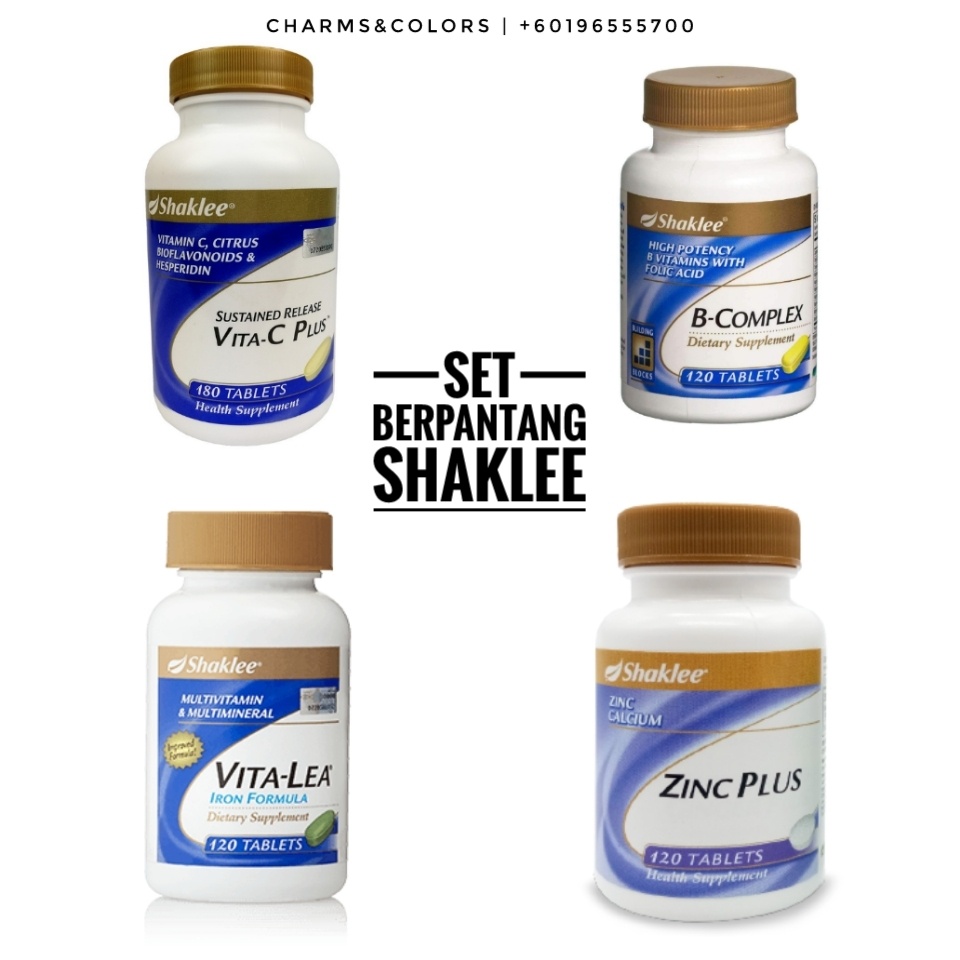





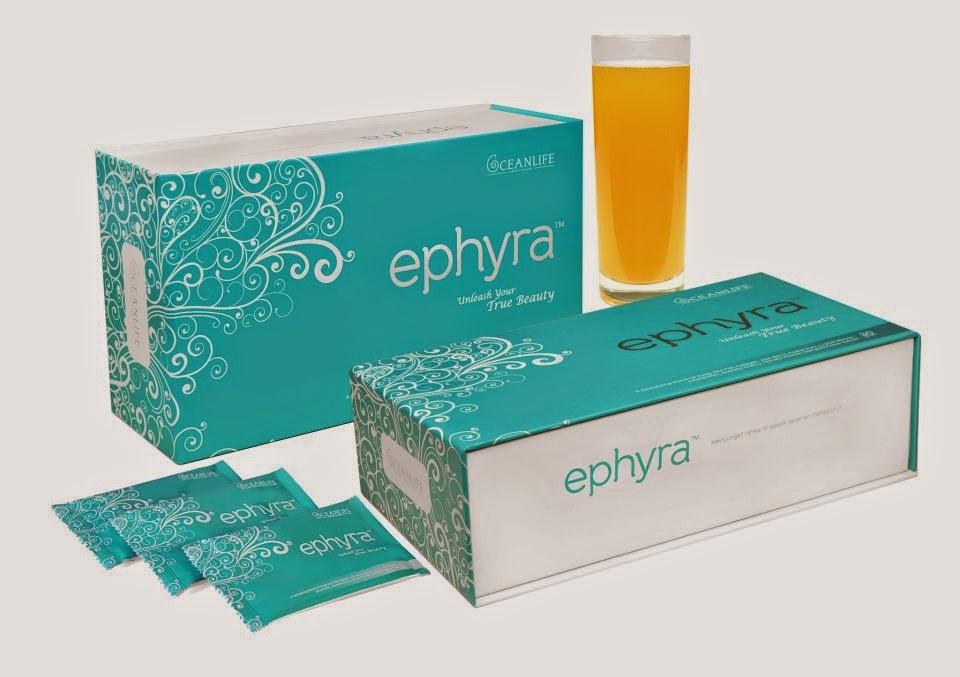
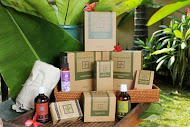


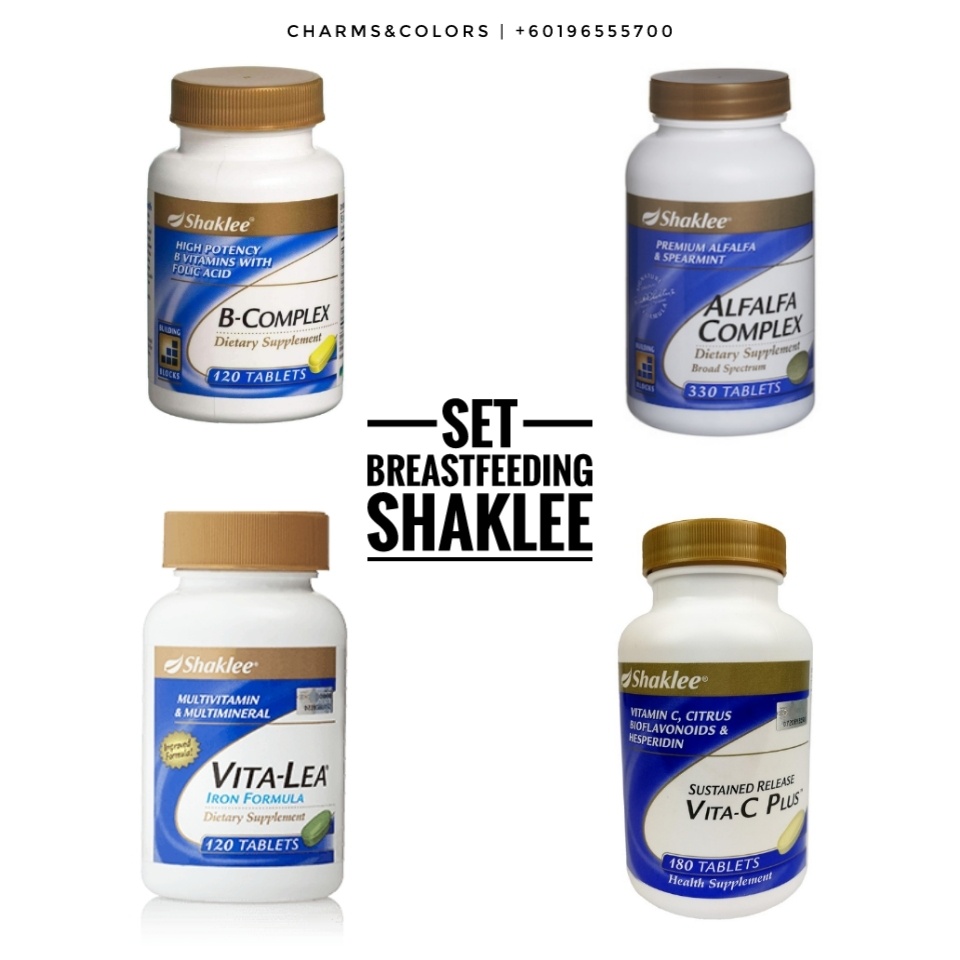

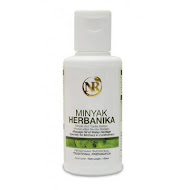
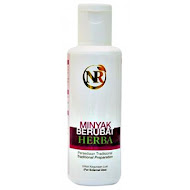

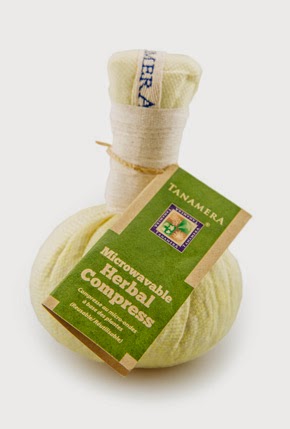
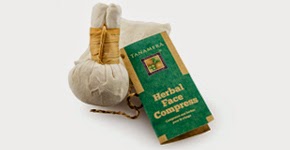















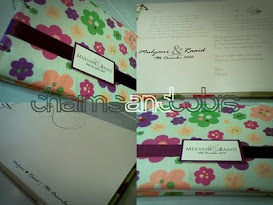

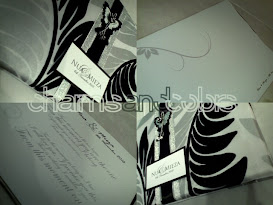e-tile.jpg)





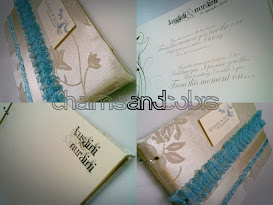E-tileE.jpg)









